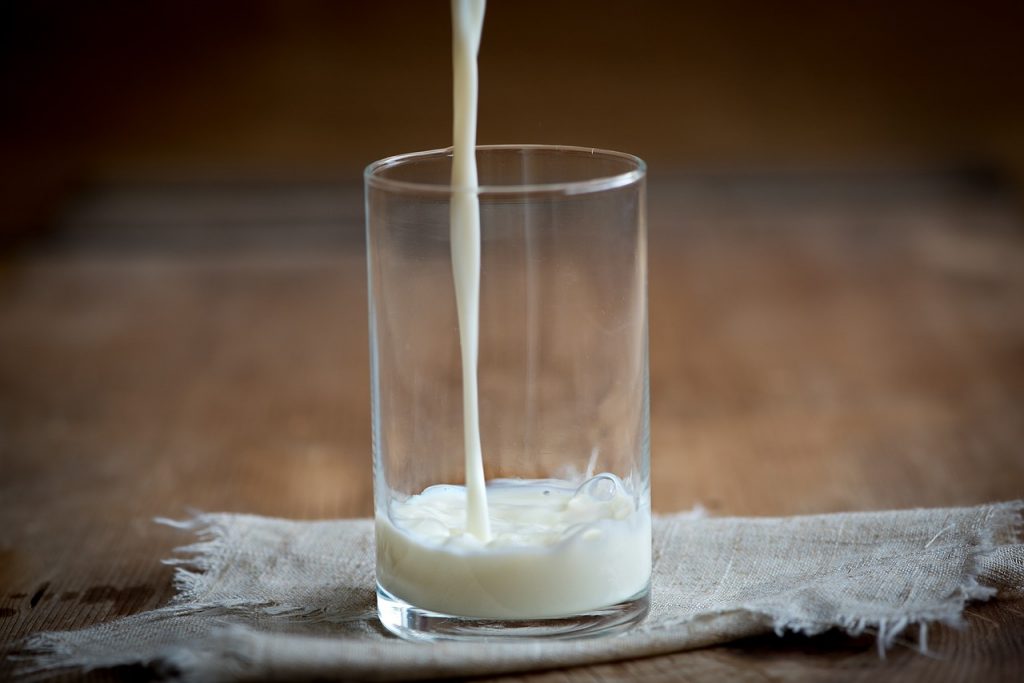 Whey protein is one of the protein fractions present in cow’s milk. When milk is curdled during cheese making, the whey protein fractions separates from the casein fraction, and this can allow the whey protein to be isolated and freeze dried. Both casein and whey protein are available in supplemental form, but whey protein is more widely available as it is considered a waste product from the manufacture of cheese, and is therefore considerably cheaper. Whey protein is a popular dietary supplement, but is also an important food additive. It is used primarily for its protein content as a supplement and a food additive, but whey protein can have other health effects, such as certain immune stimulating effects. Whey protein as a supplement comes in two main forms, a freezed dried protein concentrate or a protein isolate. There are differences between these two products and so it is important to understand these differences in order to ensure you purchase the product that best suits your needs.
Whey protein is one of the protein fractions present in cow’s milk. When milk is curdled during cheese making, the whey protein fractions separates from the casein fraction, and this can allow the whey protein to be isolated and freeze dried. Both casein and whey protein are available in supplemental form, but whey protein is more widely available as it is considered a waste product from the manufacture of cheese, and is therefore considerably cheaper. Whey protein is a popular dietary supplement, but is also an important food additive. It is used primarily for its protein content as a supplement and a food additive, but whey protein can have other health effects, such as certain immune stimulating effects. Whey protein as a supplement comes in two main forms, a freezed dried protein concentrate or a protein isolate. There are differences between these two products and so it is important to understand these differences in order to ensure you purchase the product that best suits your needs.

Milk contains two main protein fractions. Whey protein and casein. The whey protein fraction is separated from the rest of the milk during cheese manufacture. Whey is considered a waste product, but can be freeze dried and sold as whey protein supplements.
When the whey protein is initially removed from the rest of the milk during the cheese manufacturing process it is in its unprocessed or raw form. In this form, whey protein contains a number of proteins including α-lactalbumin, β-lactoglobulin and lactoferrin. The whey protein also contains lactose, the main sugar in milk, conjugated linoleic acid (CLA), certain lipids as well as phospholipids. Whey protein concentrate is therefore a homogeneous mix of milk components, but which contains a very high concentration of protein. The protein content of whey protein concentrate can be between 60 and 80 % in final supplement form, and the high concentration of branched chain amino acids can be a useful and convenient way to facilitate skeletal muscle growth particularly for athletes. Evidence from the scientific literature shows that the whole proteins and peptides in whey protein concentrate have immune stimulating effects, and it is these that provide some of the health benefits of whey protein consumption.
The whey protein concentrate can be processed further to remove much of the extraneous milk content that is not protein. Both microfiltration and ion exchange can be used in this process in order to isolate as much of the protein content as possible. However, during these processes some of the useful immune stimulating proteins are denatured and they lose their activity. The end result of ion exchange and microfiltration is therefore a purer whey protein containing a higher protein content, perhaps now up to 90 % protein, but which lacks some of the health properties of a whey protein concentrate. The purity of whey protein isolate not only improves the protein content of the whey, it also increases the absorption rate. The amino acids in whey protein isolate are therefore more quickly absorbed compared to a whey protein concentrate, which can have advantages for athletes that require a rapid absorption of protein to the circulation following training, in in those with digestive problems or medical conditions.

Eggs are a great source of protein, but whey protein is just as useful and just as healthy. Whey protein supplements are a cheaper way of adding high quality protein to a diet compared to food sources. The supplements can be added to other foods and are suitable for vegetarians.
The whey protein isolate can they be further processed. The proteins and peptides can be predigested by enzymatic processes to produce a whey protein hydrolysate, which contains much shorter peptides, produced by digesting (hydrolysing) the longer proteins. This further improves the digestibility of the whey protein, as shorter peptides require much less mechanical work from enzymes to facilitate their absorption. A whey protein isolate that has been ion exchanged, microfiltered and hydrolysed is therefore the highest quality whey protein in terms of absorption, but also the most expensive as each manufacturing process costs money. The amino acid ratios of whey remains the same irrespective of which product you chose, but as the processing steps increase the relative absorption rates also increases. However as the processing increases, the amount of immune stimulating compounds decreases. There are therefore two clear and distinct product types, and as always, the buy must choose the one that best fits their needs.
Dr Robert Barrington’s Nutritional Recommendation: If you are a serious elite athlete and money is no object, consume whey protein isolate around workouts. Isolates that have been predigested are the most absorbable but also the most expensive whey proteins. At other times consume whey protein concentrate to produce immune support. If you are an amateur athletes, a sedentary person or perhaps elderly, are going to mix the whey protein with other things, and just want to increase the protein content of your diet, choose a whey protein concentrate. Some products contain both isolate and concentrate, and this can provide some of the benefits of both. It may be worth considering these blends if you are a more serious trainer but with financial restraints who does not want to spend large amounts of money on very high quality products. There are not good and bad whey proteins, just different products, and therefore picking the right supplement for your needs is something that should be considered carefully.
RdB
